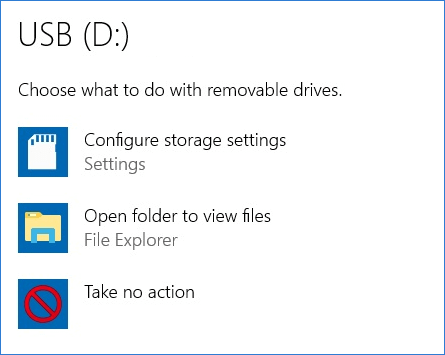
- #Repair usb drive windows 10 how to
- #Repair usb drive windows 10 windows 10
- #Repair usb drive windows 10 iso
- #Repair usb drive windows 10 download
Restart your computer, and then start Windows 7 from the installation disc or USB flash drive as previously described. Save the setting changes, and then exit the BIOS. (The USB flash drive might be listed under "Removable devices" or something similar.) Select your DVD drive or USB flash drive as the first startup device. Boot order settings might also be listed under "Advanced settings" or something similar. On the BIOS setup screen, choose the option called "Boot order," or something similar.
#Repair usb drive windows 10 download
If the Windows logo appears, you need to try again by waiting until the Windows logon prompt appears, and then shutting down and restarting your computer again. The steps involved to repair Windows 11/10 installation using the bootable Installation USB or DVD media are: Download Windows ISO. Usually, you must press a key (such as F2, F12, Delete, Esc) or a key combination immediately after you turn on your computer but before Windows starts. Procedures vary depending on the BIOS manufacturer. On the startup menu, choose "BIOS setup," or "BIOS settings," or something similar. Newer computers often display a startup (or boot) menu. Turn on your computer, insert the Windows 7 installation disc or USB flash drive, and then restart your computer. The BIOS interface is designed for advanced users, and it's possible to change a setting that could prevent your computer from starting correctly. Select your newly created bootable USB drive and press Enter.Warning: Be careful when changing BIOS settings.
#Repair usb drive windows 10 windows 10
#Repair usb drive windows 10 how to
How to Boot Your Computer From a Bootable Windows 10 USB Drive Your Windows 10 bootable USB drive is now ready. Select Close in the secure boot prompt.Select Start the bottom of Rufus to begin creating your bootable USB drive.Activate the Create extended label and icon files option.For example, Win10USBDrive is a pretty descriptive name. In the Volume label field, enter a descriptive name for your bootable drive.Select UEFI (non CSM) from the Target system menu.



Make sure Standard Windows installation is selected in the Image option dropdown menu. Without a drive letter, your operating system might struggle to locate and access the hard drive.

#Repair usb drive windows 10 iso
Choose Select next to this option, navigate to where you’ve saved Windows 10’s ISO file, and select the file to add it to Rufus.


 0 kommentar(er)
0 kommentar(er)
